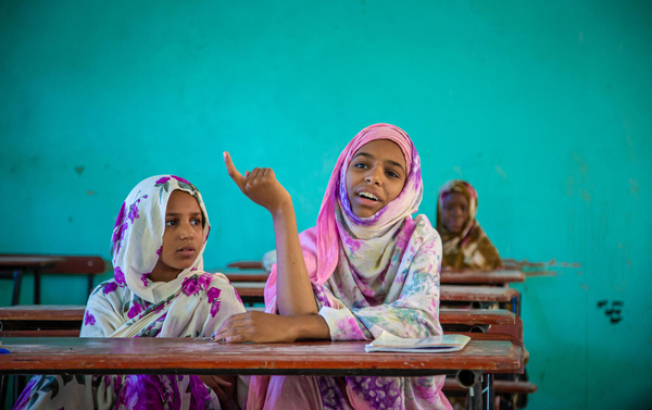Analysis of Mauritania's Education Sector
Engaged in transforming its educational system but still far from offering education for all, Mauritania assesses the state of its education in a new sector analysis report conducted with IIEP-UNESCO Dakar.
With its new law adopted in 2022, Mauritania has embarked on a significant reform of its educational system, establishing compulsory and free schooling for children aged 6-15. However, significant progress is still needed to achieve the Sustainable Development Goals (SDGs) in education by 2030 in this country, where the school-age population more than doubled between 1988 and 2020.
The new National Education System Report (RESEN), produced with the support of the International Institute for Educational Planning (IIEP-UNESCO Dakar), provides an in-depth analysis of the current educational landscape in Mauritania. By identifying the numerous obstacles to quality education for all, it can serve as a tool for national education stakeholders as well as technical and financial partners, whose common goal is to improve the educational offering.
Enrollment and Quality Issues
The report's authors provide a very precise picture of the state of schooling and its funding in Mauritania. Despite some progress, partly due to increased total education expenditures, Mauritania is still far from universal enrollment. "The primary completion rate has not yet reached 70%, far from the SDG 2030 targets," emphasizes Thomas Poirier, Senior Policy Analyst at IIEP-UNESCO Dakar. The country faces issues such as dropout rates, early school leaving at the end of each cycle, and late entry into primary school. As a result, "the number of out-of-school children is extremely high," the analyst adds. For those leaving the general education system, the technical and vocational sectors lack the capacity to accommodate them.
Beyond the goal of schooling for all, the quality of education needs improvement. Problems with teacher training and absenteeism, infrastructure sometimes lacking water and electricity, impact the level of students in Mauritania, deemed low. Higher education, for its part, struggles to provide professional guidance to its graduates, who face significant difficulties entering a labor market dominated by the informal sector.
One positive point: the enrollment of girls has made significant progress. "We can almost consider parity achieved at the primary level," notes Thomas Poirier. However, inequalities remain strong from secondary education onward, with a widening gap between girls and boys in both school access and performance. These advances are thus to be nuanced, as many factors of girls' non-enrollment persist, in a country where, once adults, women will be twice as likely to be unemployed as men.
Ensuring All Children Attend School
The report highlights many obstacles to schooling, unevenly distributed across the country where poverty is high: a lack of infrastructure and basic services, an inadequately managed school network, schools with missing grades, hidden school fees, a high prevalence of teenage pregnancies, as well as floods, droughts, and food crises causing malnutrition among some Mauritanian children. Specific realities to Mauritania must also be considered, particularly the significant role of traditional education in Madrasahs. Many young people start their education in traditional schools before entering modern schools, often late. "More fluid and flexible bridges between the two systems need to be created," argues Thomas Poirier.
In this context, Mauritania's primary goal, Thomas Poirier recalls, must be "to ensure that children go to school and stay there, combating the factors of school abandonment, especially during the primary cycle." To improve the quality of education, better reception conditions must be offered, class sizes reduced, teachers better trained, and some curricula revised. "Mauritania must also invest in preschool education; propose a smoother transition between the fundamental cycle and secondary cycle since middle school now constitutes the basic education and make efforts on girls' secondary education enrollment," lists Thomas Poirier. Reforming vocational education must become a priority, as it is urgent to diversify higher education pathways, considering professional opportunities.
To address these deficiencies, public spending on education must be maintained at a high level. Mauritania must also have tools to prepare and act, strengthening its Education Administration and Management Information System (SIRAGE) to better track gender equality, equity, inclusivity, and the impacts of climate variability on schools. In this regard, Mauritania has adopted a new National Education System Development Program (PNDSE III), covering the period 2023-2030. Partly embedded in the National Education System Orientation Law passed by the National Assembly on July 27, 2022, and the report of the National Consultations on the Reform of the National Education System (2021), and partly in the second action plan of the Accelerated Growth and Shared Prosperity Strategy 2021-2025 (SCAPP), this sectoral plan, accompanied by a first action plan until 2026, aims to provide quality education to all Mauritanian children. Several major reforms are already underway and planned, such as extending basic education to nine years (primary and middle school), generalizing the last year of preschool by 2030, and offering instruction in national languages.




